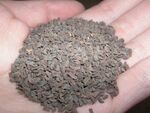This is an unofficial archive of PsychonautWiki as of 2025-08-08T03:33:20Z. Content on this page may be outdated, incomplete, or inaccurate. Please refer to the original page for the most up-to-date information.
Peganum harmala: Difference between revisions
Jump to navigation
Jump to search
>David Hedlund m David Hedlund moved page Peganum harmala to Peganum harmala (botany) over redirect: standard |
>David Hedlund m David Hedlund moved page Peganum harmala to Peganum harmala (botany) over redirect: standard |
(No difference)
| |
Revision as of 17:41, 1 November 2017
| Peganum harmala | |
|---|---|
 P. harmala in the nature. |
|
| Taxonomical nomenclature | |
| Kingdom | Plantae |
| Unranked | Angiosperms |
| Unranked | Eudicots |
| Unranked | Rosids |
| Order | Sapindales |
| Family | Nitrariaceae |
| Genus | Peganum |
| Species | P. harmala |
| Common nomenclature | |
| Common names | Espand, Esfand, Syrian rue |
| Constituents | |
| Active constituents | Harmala alkaloid |
Peganum harmala, commonly called espand, esfand, wild rue, Syrian rue, African rue, harmel, or aspand, is a plant native to the eastern Iranian region west to India. It has also spread invasively throughout Arizona, California, Montana, Nevada, Oregon, Texas and Washington.[1] The plant itself produces seeds which contain harmala alkaloids and is easily accessible and legal to purchase online.
Chemistry

Powdered syrian rue seeds act as a reversible inhibitor of MAO-A (RIMA) at doses of 2-5g. Syrian rue seeds contain several different harmala alkaloids at slightly varying percentages. Only some are monoamine oxidase A inhibitors. In one study, total harmala alkaloids were at least 5.9% of dried weight.[2][3]
- Harmane: 0.16%
- Harmine: 0.44% (the coatings of the seeds are said to contain large amounts of harmine)
- Harmaline: 0.25%
- Harmalol: 0.6%
- Tetrahydroharmine: 0.1%
- Vasicine (peganine): 0.25%<
- Vasicinone: 0.0007%